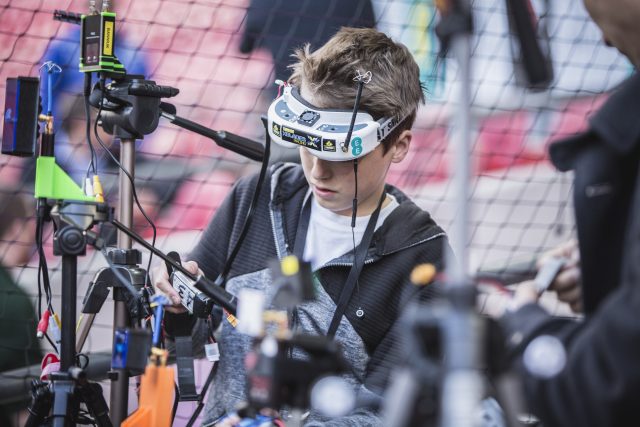
(credit: Tom Dymond / EE)
Yesterday evening, April 13, a swarm of drones descended upon Wembley Stadium in London. The pilots, who controlled their drones using first-person-view (FPV) headsets, were challenged with slaloms through the players’ tunnel, bank turns around the corner flags, and barrel rolls above the royal box.
Organised by EE, chip maker Qualcomm, and the European Rotor Sports Association (ERSA), the event was "a chance to celebrate the recent success of Europe’s leading pilots," EE wrote in a press release. Luke Bannister, the UK teen who recently won the $250K grand prize at the Dubai World Drone Prix, was at the event to show everyone how it's done.
The event, however, must have looked a bit strange, since the stadium was completely empty except for a bunch of journalists protected from drones flying at 75mph (120km/h) by a net. Presumably the safety measures could've been extended to squeeze more spectators in—but they wouldn't have been able to see much, anyway.








